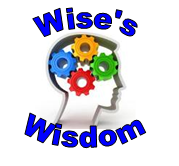A recent study completed by the Center for American Progress reports that, for many students, school is too easy. The study claims that school is only a challenge for a small group of students at the top of our schools (usually our high schools), but not for the majority of students in grades K-12.
Among the findings . . .
- 37% of fourth-graders say their math work is "often" or "always" too easy;
- 57% of eighth-graders say their history work is "often" or "always" too easy;
- 39% of 12th-graders say they rarely write about what they read in class.
This study can certainly spark some great dialogue and discussion. How can our work with homework and grading practices change our kids' perceptions of the work they're being asked to do? How can data team work ensure all students are being challenged appropriately? How can project-based learning unit design push students to think critically and be more challenged?
I'm reminded of the question John Hattie suggests we ask our students . . . "Does your teacher like you?" . . . Maybe we should also ask, ""Does your teacher challenge you enough?" I wonder what kind of answers we would get . . .
How to Turn Your Classroom into an Idea Factory
My selection this week comes from Suzie Boss, author of Bringing Innovation to School: Empowering Students to Thrive in a Changing World. She opens the article with the question that many people both in and out of education seem to be asking more frequently: How can we prepare today’s students to become tomorrow’s innovators? Boss highlights the PBL approach and provides 8 tips to turn your classroom into an idea factory.
As we've embraced PBL and begin to select teachers for our upcoming training, let's challenge those that have been through the training to embrace these 8 tips, making them the norm for our students and future innovators!
How to Turn Your Classroom into an Idea Factory
As I planned for the upcoming Principals' meeting, I chose to emphasize classroom walk-throughs and instructional rounds. The electronic template is a tool the administrators of HCSD will use to provide feedback to teachers about their curriculum, instruction, and assessment practices.
We know it is important to provide feedback to teachers and students. However, we don't often discuss the components of meaningful feedback. This week's article is "Seven Keys to Effective Feedback" by Grant Wiggins. He explains that "...feedback is information about how we are doing in our efforts to reach a goal.". The author gives six concrete examples of descriptive information that helped me better understand the concept.
Seven Keys to Effective Feedback
Connected Educator Month - One More Thing
My entry this time is from a simple blog post by Stephanie Sandifer, who participated in “Connected Educator Month” during August. She focuses on carrying the energy of connected learning and being connected educators into this school year. Stephanie’s goals of inspiring and encouraging our colleagues and seeking more connected ways of working and learning makes me think about our HALS groups and the value they can bring to our professional lives. As we think about our HALS groups for 2012-2013 and determine how best to process and communicate our learning, it is important to consider multiple ways to move beyond the texts even more and expand our repertoires when it comes to further developing our instructional leadership. “Connected Educator Month – One More Thing” just serves as another reminder that we have the opportunity to become “just connected enough” to benefit greatly from our own learning and the learning others are willing to share with us. Sandifer does remind us that there is such a thing as becoming too connected. If we find a balance, though, between connecting AND taking the time to disconnect on occasion, we can enjoy the benefits of being connected learners and educators. We are preparing once again use HALS in order to engage in rich dialogue around timely topics that will help us to better understand and address the needs of Hilliard students. Let’s stretch ourselves even more this year and dip our toes into the stream of social media. Instead of writing a “final” reflection on the HALS group experience, think about using social media in ways that will keep the conversations alive and will allow your work this year to have an impact well beyond the scope of a year-long topical study. The possibilities are endless. Stephanie wisely reminds us to be careful, though. If we stay in too long, we’ll get all pruney.
Connected Educator Month - One More Thing
My entry this time is from a simple blog post by Stephanie Sandifer, who participated in “Connected Educator Month” during August. She focuses on carrying the energy of connected learning and being connected educators into this school year. Stephanie’s goals of inspiring and encouraging our colleagues and seeking more connected ways of working and learning makes me think about our HALS groups and the value they can bring to our professional lives. As we think about our HALS groups for 2012-2013 and determine how best to process and communicate our learning, it is important to consider multiple ways to move beyond the texts even more and expand our repertoires when it comes to further developing our instructional leadership. “Connected Educator Month – One More Thing” just serves as another reminder that we have the opportunity to become “just connected enough” to benefit greatly from our own learning and the learning others are willing to share with us. Sandifer does remind us that there is such a thing as becoming too connected. If we find a balance, though, between connecting AND taking the time to disconnect on occasion, we can enjoy the benefits of being connected learners and educators. We are preparing once again use HALS in order to engage in rich dialogue around timely topics that will help us to better understand and address the needs of Hilliard students. Let’s stretch ourselves even more this year and dip our toes into the stream of social media. Instead of writing a “final” reflection on the HALS group experience, think about using social media in ways that will keep the conversations alive and will allow your work this year to have an impact well beyond the scope of a year-long topical study. The possibilities are endless. Stephanie wisely reminds us to be careful, though. If we stay in too long, we’ll get all pruney.
The 3 Biggest Ways Technology Is Disrupting Education Forever
It's interesting to think that we are in the middle of the educational technology revolution. I would imagine most of us look at the changes and think we are near the end of the bell curve instead of the bottom of the ascension. I remember thinking to myself "How will they ever advance the CD" then the MP3 came. In this article the author shares three distinct innovations that will change education as we know it forever. I love this kind of thinking. The first two we are relatively familiar with or at least having the discussion at HCSD. The third though worries me because I wonder if we are overlooking such an important aspect of disruptive technology. The author will mention a platform called Schoology that teachers/districts/students are starting to embrace. I used this platform last year and I can't agree more with the author on the potential impact "social media student interaction" will have on our future. Schoology is Facebook for school. Legitimately they stole everything about Facebook and turned it into a Learning Management System (LMS). Online tests/quizzes, discussions, videos, in class polling, twitter integration, Remind 101 integration, Common Core tagging, and a virtual collaborative bin to share lessons and ideas across the world. We need to make sure we are speaking our students language as this change is happening, or else they are going to be searching for another conversation partner. These are three ways education will change forever, what are the next three and are we prepared to embrace them? Then again, we never thought the white board could be improved, or a smart board, or virtual reality, or 3D projectors….what's next? Do you as a building Principal communicate with your students on their level? Their social media level that is.






No comments:
Post a Comment